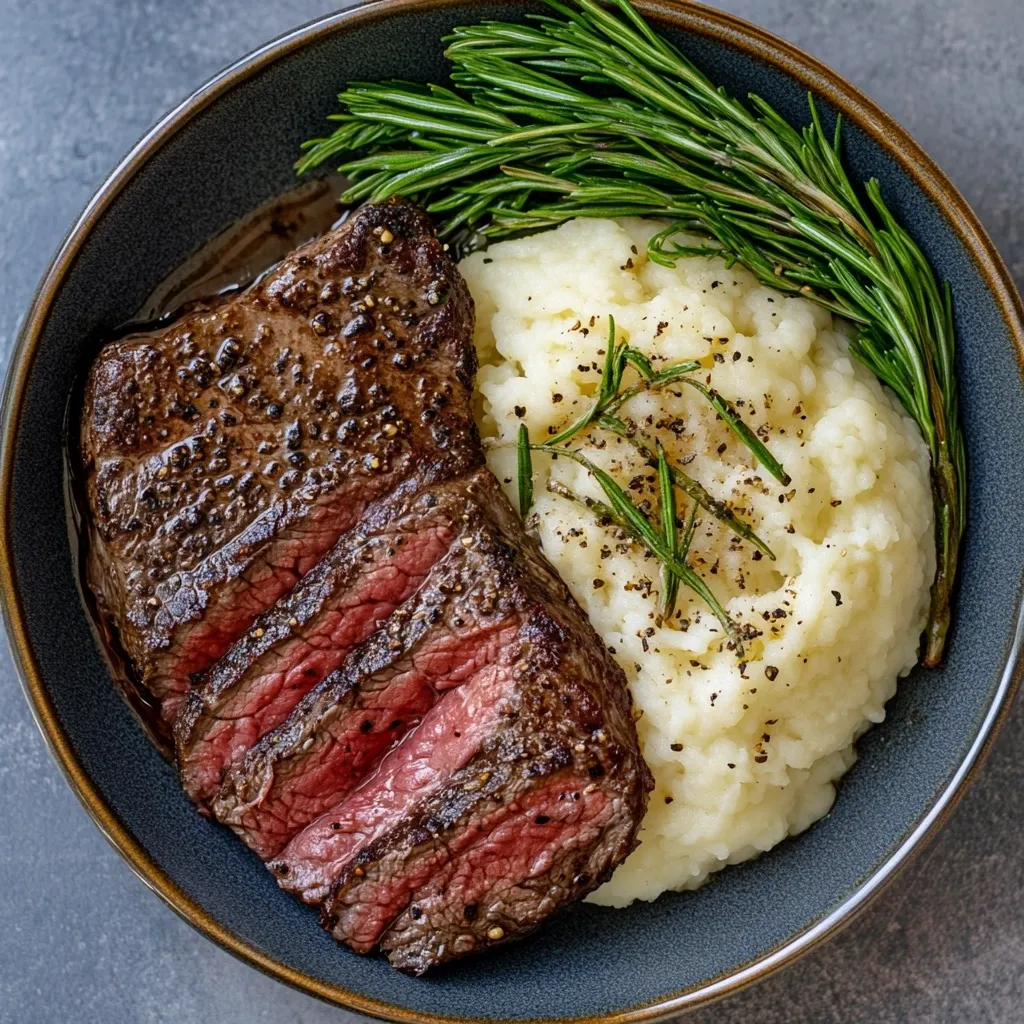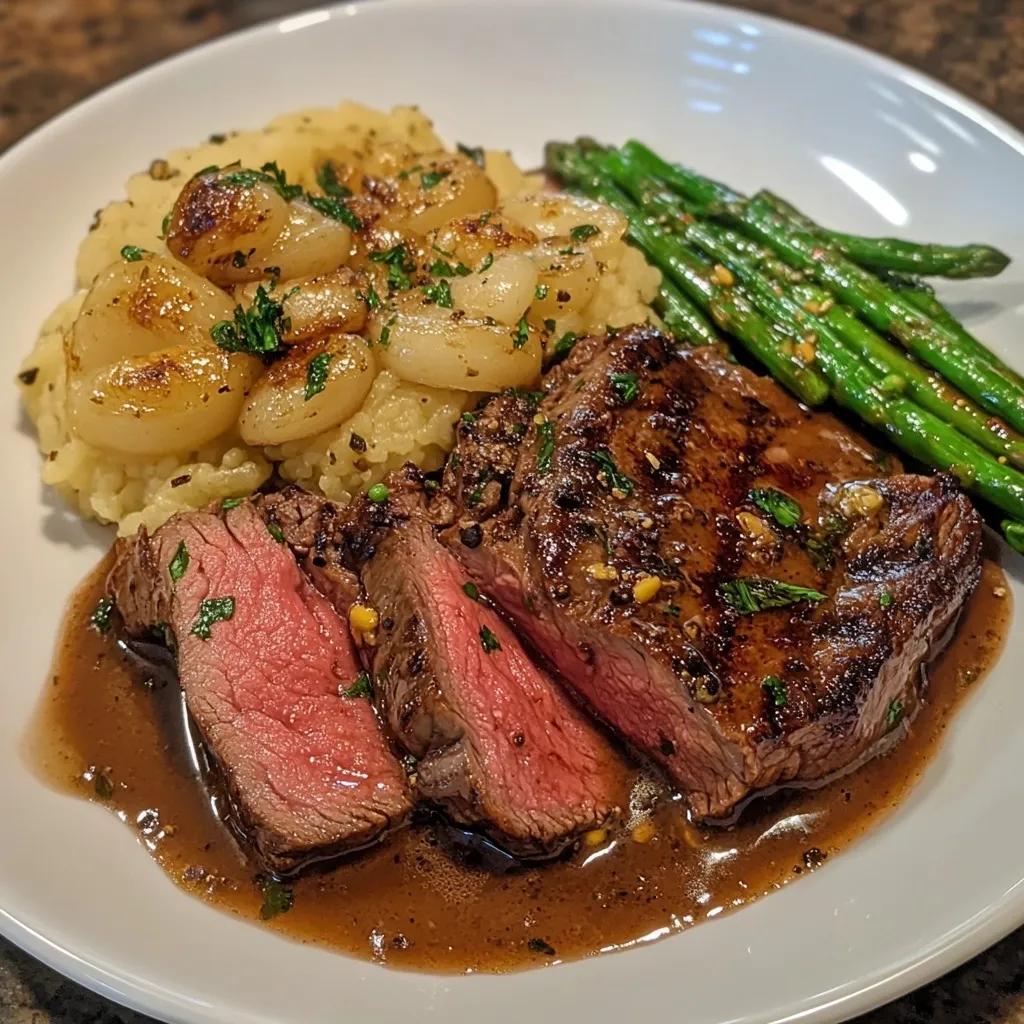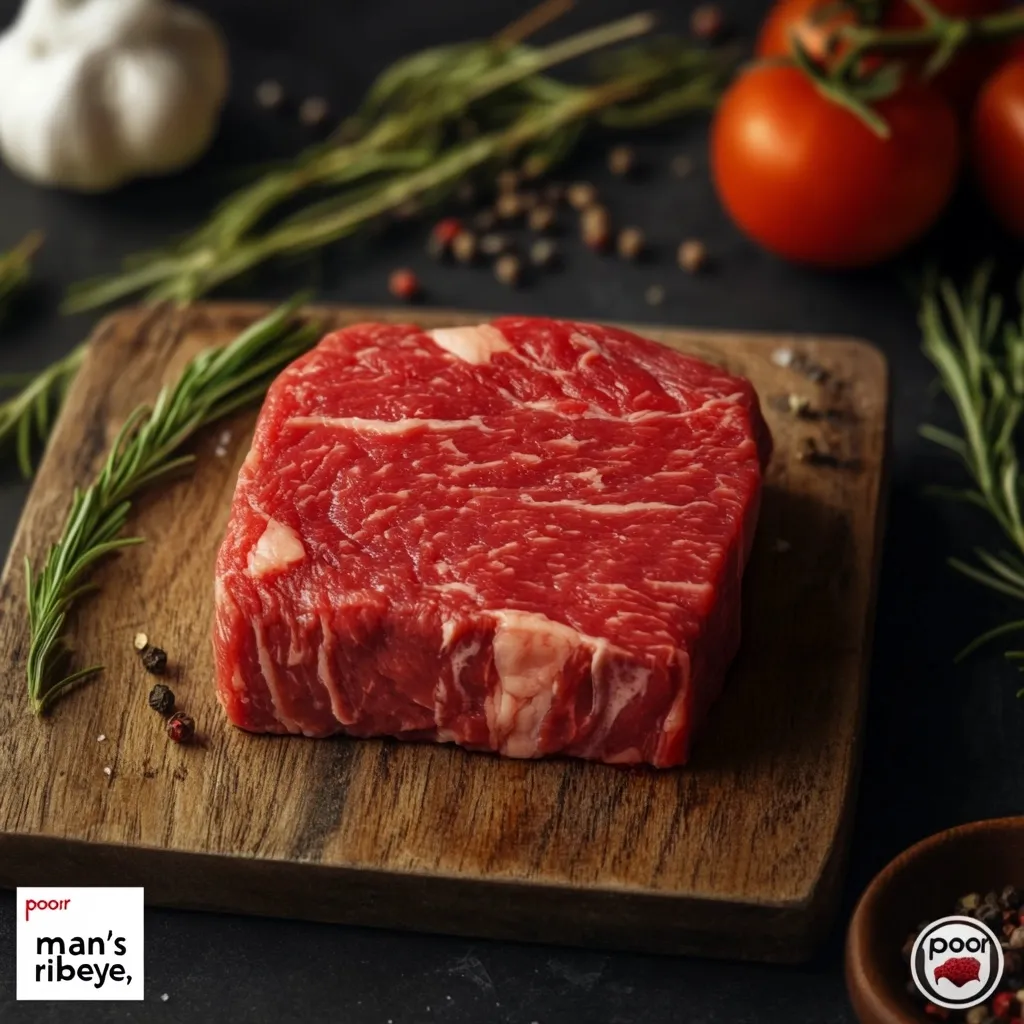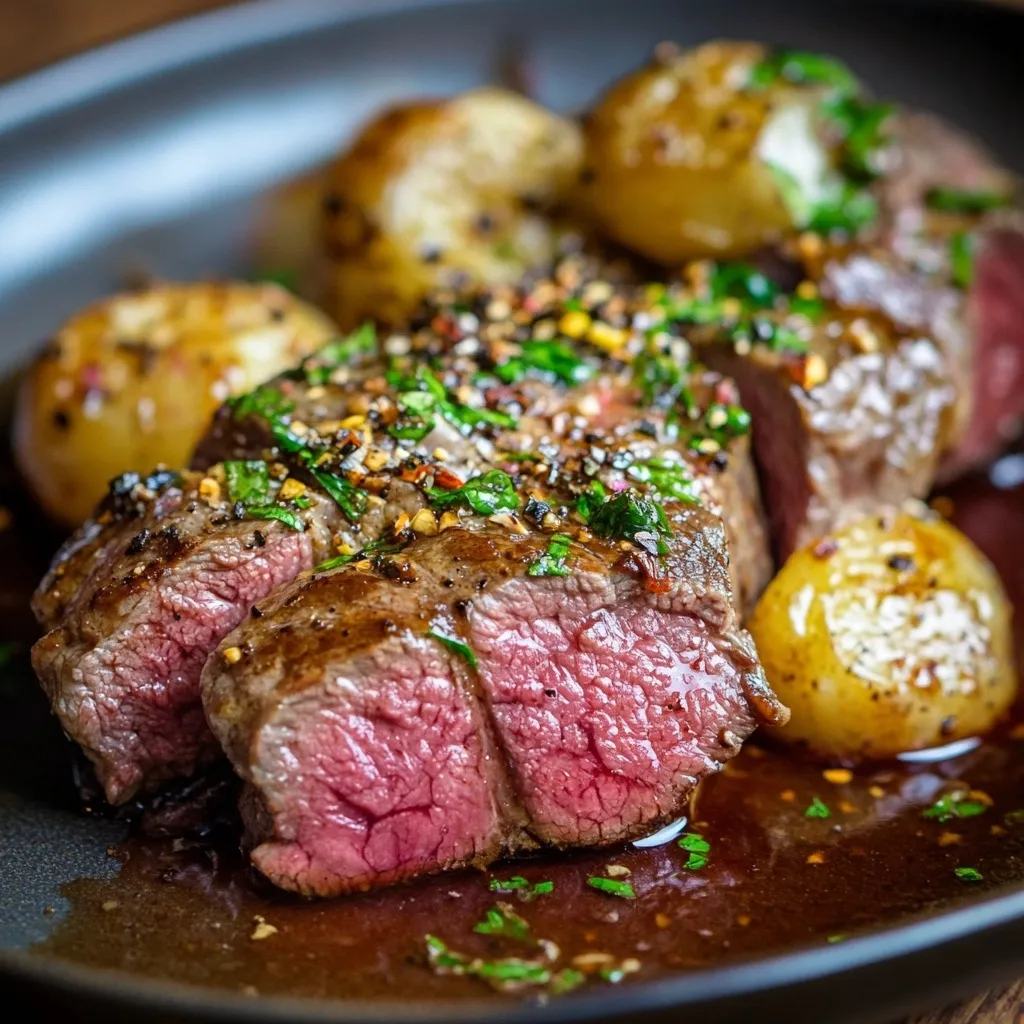Table of Contents
Introduction
Often called the “poor man’s ribeye,” beef chuck eye steak offers exceptional flavor and tenderness at a fraction of the cost. With proper preparation and technique, this underrated cut transforms into a mouthwatering masterpiece perfect for any occasion. Explore its potential and elevate your cooking skills with this versatile steak.
Understanding the Popularity of Beef Chuck Eye Steak
Beef chuck eye steak has gained popularity for its rich marbling, robust flavor, and affordability. Often compared to ribeye, it delivers a similar taste experience without the hefty price tag. This cut, sourced from the flavorful chuck primal, appeals to steak lovers seeking quality and value. Its versatility further cements its culinary acclaim.
Why It’s Known as the “Poor Man’s Ribeye”
Known as the “poor man’s ribeye,” beef chuck eye steak delivers exceptional flavor and tenderness similar to ribeye but at a budget-friendly price. This versatile cut boasts rich marbling, making it a hidden gem for steak lovers seeking gourmet quality. Its affordability and taste make it a standout in any kitchen.
Benefits of Cooking Beef Chuck Eye Steak at Home
Cooking beef chuck eye steak at home offers unmatched control over flavor and doneness. It’s an economical choice that replicates the taste of high-end cuts. Customize seasonings, achieve perfect sears, and enjoy fresher, healthier meals. Elevate your culinary skills while savoring a premium steak experience without the hefty restaurant price tag.

Choosing the Perfect Beef Chuck Eye Steak
Selecting the ideal beef chuck eye steak begins with vibrant marbling, ensuring tenderness and flavor. Opt for cuts with a deep, rich red hue and minimal surface moisture. Freshness matters; check for a clean, robust aroma. This affordable cut offers the essence of ribeye, making it a top choice for home cooking enthusiasts.
What to Look for at the Butcher Counter
At the butcher counter, seek beef chuck eye steak cuts with consistent marbling for rich flavor. Ensure the meat has a bright, ruby-red tone and a firm texture. Avoid overly wet or grayish steaks. Ask your butcher for freshly cut portions to guarantee quality. Proper selection ensures a succulent and satisfying steak experience.
Grass-Fed vs. Grain-Fed: Which is Better?
Choosing between grass-fed and grain-fed beef chuck eye steak depends on taste and nutritional priorities. Grass-fed offers a leaner profile with earthy, robust flavors and higher omega-3s. Grain-fed delivers a tender texture and buttery richness due to higher marbling. Both options can create a delectable steak, catering to your culinary preferences.
Marbling and Thickness: The Key to Tenderness
The marbling and thickness of a beef chuck eye steak play a pivotal role in its tenderness. Well-marbled steaks, with their fat distribution, melt during cooking, enhancing flavor and creating a juicy, soft texture. Thicker cuts also offer more opportunities for even cooking, ensuring the perfect balance of tenderness and flavor.

Preparing Your Beef Chuck Eye Steak
Bringing a beef chuck eye steak to room temperature before cooking is essential for even cooking. When the steak is too cold, the outer layer cooks faster than the inside, leading to uneven doneness. Allowing it to rest outside the fridge ensures a more tender, juicy, and flavorful result.
The Importance of Bringing Steak to Room Temperature
Allowing a beef chuck eye steak to come to room temperature before cooking is crucial for optimal results. This step ensures more even cooking, preventing the outer layers from overcooking while the center remains underdone. Achieving uniform heat distribution enhances tenderness and helps retain juices for a flavorful, satisfying steak.
How to Properly Trim and Season Your Steak
To properly trim and season a beef chuck eye steak, start by removing excess fat or silverskin. This ensures a smoother texture. Season generously with salt, pepper, and your favorite herbs or spices. For extra flavor, let the seasoning marinate for at least 30 minutes before cooking to enhance the steak’s richness.
Best Marinades and Dry Rubs for Flavor Enhancement
For a flavorful beef chuck eye steak, try marinades featuring garlic, soy sauce, and Worcestershire for depth. For a dry rub, combine smoked paprika, brown sugar, and ground mustard to elevate the steak’s taste. Let the flavors meld for at least 30 minutes, ensuring a tender, juicy result with bold flavors.
Cooking Techniques for Pro-Level Results
For a tender and flavorful beef chuck eye steak, try marinades that combine balsamic vinegar, olive oil, and fresh herbs. Alternatively, a dry rub with brown sugar, smoked paprika, and garlic powder can create a savory crust. These enhancements infuse the steak with rich, bold flavors that elevate its natural taste.
Grilling: Achieving a Perfect Char and Juicy Center
Grilling beef chuck eye steak requires high heat to achieve a perfect char on the outside while keeping the center juicy and tender. Sear the steak for a few minutes on each side, then lower the heat and finish cooking to your preferred doneness. This technique ensures a flavorful, balanced texture.
Pan-Searing: Crispy Crusts and Butter-Basting Tips
Pan-searing beef chuck eye steak is a fantastic way to develop a crispy, caramelized crust. Ensure the pan is preheated to high heat for optimal results. As the steak cooks, butter-basting with herbs and garlic enhances flavor, creating a rich, succulent interior while preserving a satisfying crunch on the outside.
Broiling in the Oven: A Quick and Even Method
Broiling beef chuck eye steak in the oven is a fast and efficient method to achieve a beautifully browned exterior. The high heat ensures even cooking, creating a perfectly seared crust while locking in juices. Monitor closely to avoid overcooking, ensuring a tender, flavorful steak every time.
Sous Vide for Precise Temperature Control
Sous vide cooking ensures precise temperature control for beef chuck eye steak, delivering consistent, melt-in-your-mouth tenderness. By sealing the steak in a vacuum bag and immersing it in a water bath at the desired temperature, the meat cooks evenly, retaining its natural flavors and juiciness for an exceptional result.
Achieving the Perfect Doneness
Achieving the perfect doneness with beef chuck eye steak requires careful attention to temperature. For a tender, juicy result, use a meat thermometer to ensure it reaches the ideal internal temperature. Whether rare, medium, or well-done, precision ensures the steak retains its flavor and optimal texture.
Understanding Steak Temperatures and Their Impact
Understanding steak temperatures is essential for perfecting beef chuck eye steak. Each level of doneness affects flavor and texture. A rare steak is tender and juicy, while well-done can become tough. Using a meat thermometer helps ensure you achieve the ideal balance between flavor and tenderness, tailored to your preference.
Using a Meat Thermometer for Accuracy
Using a meat thermometer ensures perfect doneness for your beef chuck eye steak. It accurately measures internal temperature, preventing undercooking or overcooking. For optimal results, aim for 130°F for medium-rare. This simple tool helps maintain precision, ensuring your steak is tender, juicy, and cooked to your exact preference.
Resting Your Steak: Why It’s Crucial
Resting your beef chuck eye steak after cooking is essential for retaining its juices. This allows the muscle fibers to relax, ensuring a more tender and flavorful bite. A 5-10 minute rest will enhance the steak’s texture, making it juicier and more enjoyable to eat, perfectly balanced in flavor.
Pairing and Serving Your Steak
When serving beef chuck eye steak, complement its rich flavor with bold sides like roasted vegetables, mashed potatoes, or a crisp salad. A full-bodied red wine, such as Cabernet Sauvignon, enhances its juiciness. Consider adding a finishing touch of compound butter or a tangy chimichurri for extra flair.
Suggested Side Dishes to Complement Beef Chuck Eye Steak
Pairing beef chuck eye steak with classic sides elevates the meal. Roasted garlic mashed potatoes offer creamy texture, while sautéed asparagus provides a fresh contrast. For added flavor, a side of caramelized Brussels sprouts or a tangy Caesar salad enhances the steak’s rich, savory profile, creating a balanced feast.
Perfect Wine and Beverage Pairings
A bold beef chuck eye steak pairs wonderfully with a full-bodied red wine like Cabernet Sauvignon, which complements the steak’s richness. For a lighter option, a Syrah offers smoky depth. Alternatively, a well-chilled IPA enhances the steak’s flavors with its hoppy bitterness, creating a dynamic and satisfying experience.
Garnishes and Sauces to Elevate the Meal
For an elevated beef chuck eye steak, garnish with fresh herbs like rosemary or thyme to add a fragrant touch. A rich, velvety béarnaise sauce or a tangy chimichurri enhances the steak’s natural flavors. A dash of sea salt and a sprinkle of cracked pepper complete the luxurious experience.

Common Mistakes to Avoid
When cooking beef chuck eye steak, avoid overcooking it, as it can lead to dryness. Another mistake is not allowing the steak to rest after cooking, which results in lost juices. Additionally, skipping proper seasoning before cooking can diminish the steak’s natural flavor and tenderness.
Overcooking or Undercooking: How to Get It Right
To achieve the perfect cook on beef chuck eye steak, aim for medium-rare or medium doneness. Overcooking will toughen the meat, while undercooking can lead to an unpleasant texture. Use a meat thermometer for precision, ensuring the steak reaches the ideal internal temperature without losing its tender, juicy qualities.
The Danger of Skipping the Resting Step
Skipping the resting step after cooking beef chuck eye steak can result in a loss of juices. When the steak is cut too soon, the flavorful juices escape, leaving the meat dry. Resting allows the fibers to relax, ensuring a moist and tender steak with optimal flavor and texture.
Missteps in Seasoning or Marinading
Missteps in seasoning or marinating beef chuck eye steak can lead to imbalance in flavor. Over-marinating may overpower the natural taste, while under-seasoning can leave the steak bland. It’s crucial to use the right amount of time and ingredients to enhance, not mask, the rich flavor of the meat.
Ingredients:
- 2 chuck eye steaks
- 1 tbsp olive oil
- 2 tsp kosher salt
- 1 tsp black pepper
- 1 tsp garlic powder
- 1 tsp smoked paprika (optional)
Instructions:
- Season: Pat the steaks dry with paper towels. Brush with olive oil and season both sides generously with salt, pepper, garlic powder, and paprika. Let rest for 30 minutes to bring to room temperature.
- Preheat: Heat your griddle, skillet, or grill to medium-high heat.
- Cook:
- Place steaks on the hot surface. Sear for 4-5 minutes on one side without moving them.
- Flip and cook for another 3-5 minutes or until the internal temperature reaches:
- 130°F (medium-rare)
- 140°F (medium)
- Rest: Remove steaks and let them rest for 5 minutes to redistribute the juices.
Conclusion
For an elevated beef chuck eye steak, garnish with fresh herbs like rosemary or thyme to add a fragrant touch. A rich, velvety béarnaise sauce or a tangy chimichurri enhances the steak’s natural flavors. A dash of sea salt and a sprinkle of cracked pepper complete the luxurious experience.
Why Mastering Beef Chuck Eye Steak Is Worth the Effort
Mastering the preparation of a beef chuck eye steak is a culinary endeavor that yields both economic and gastronomic rewards. This cut offers a rich, beefy flavor reminiscent of more expensive steaks, making it a cost-effective choice for steak enthusiasts. With proper seasoning and cooking techniques, it can rival premium cuts in taste and tenderness. Investing time in learning the nuances of this steak enhances your cooking repertoire and provides a satisfying dining experience.
Encouragement to Experiment with Cooking Methods
Exploring diverse cooking techniques can elevate the flavor and texture of a beef chuck eye steak. Grilling imparts a smoky essence, while pan-searing with butter enhances its richness. Sous vide cooking ensures precise doneness, and broiling offers a quick, even cook. Experimenting with these methods can lead to delightful culinary discoveries.

